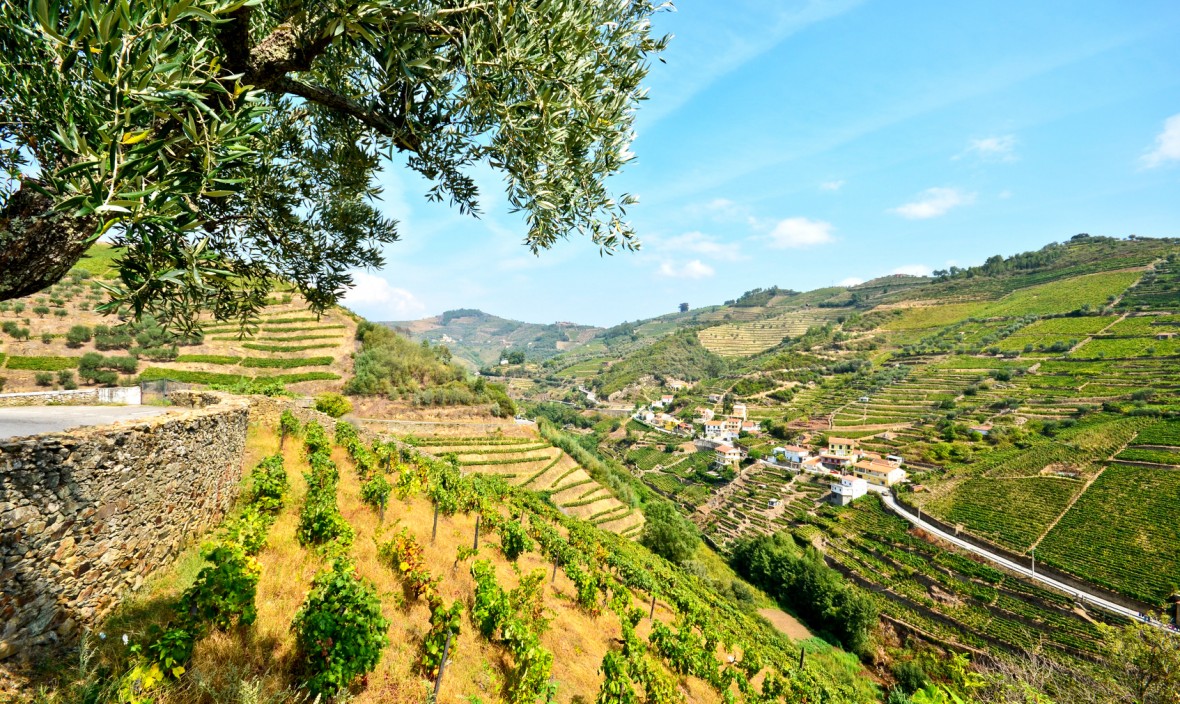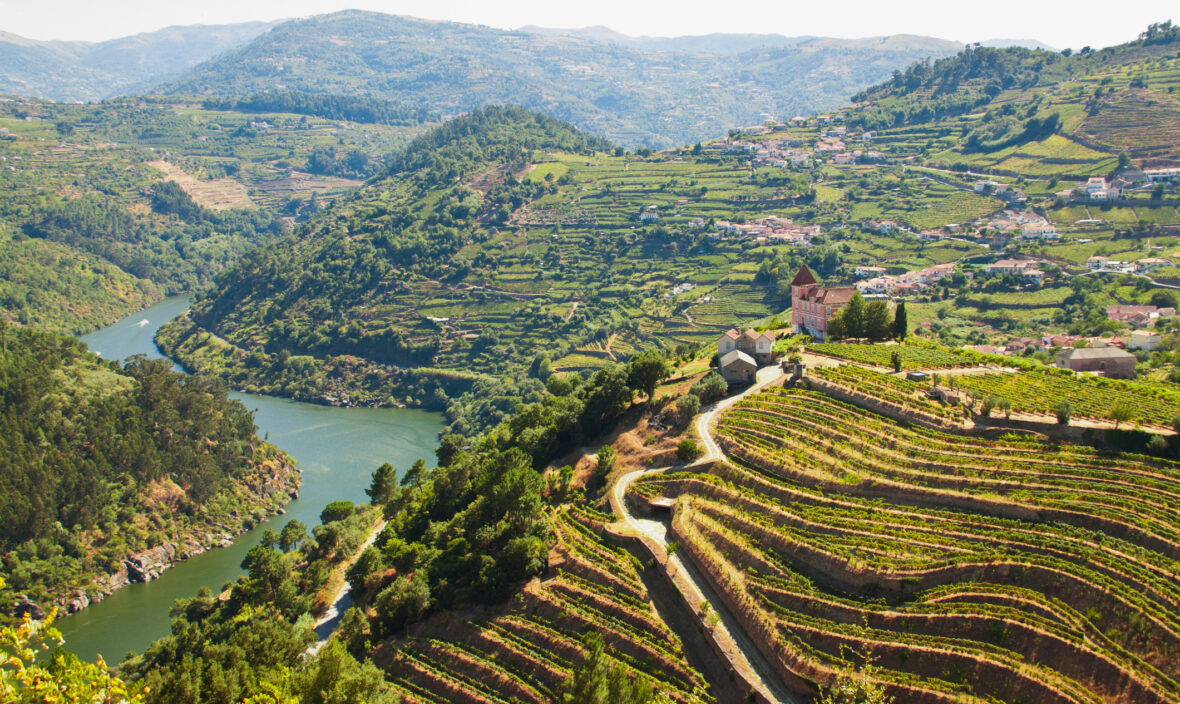

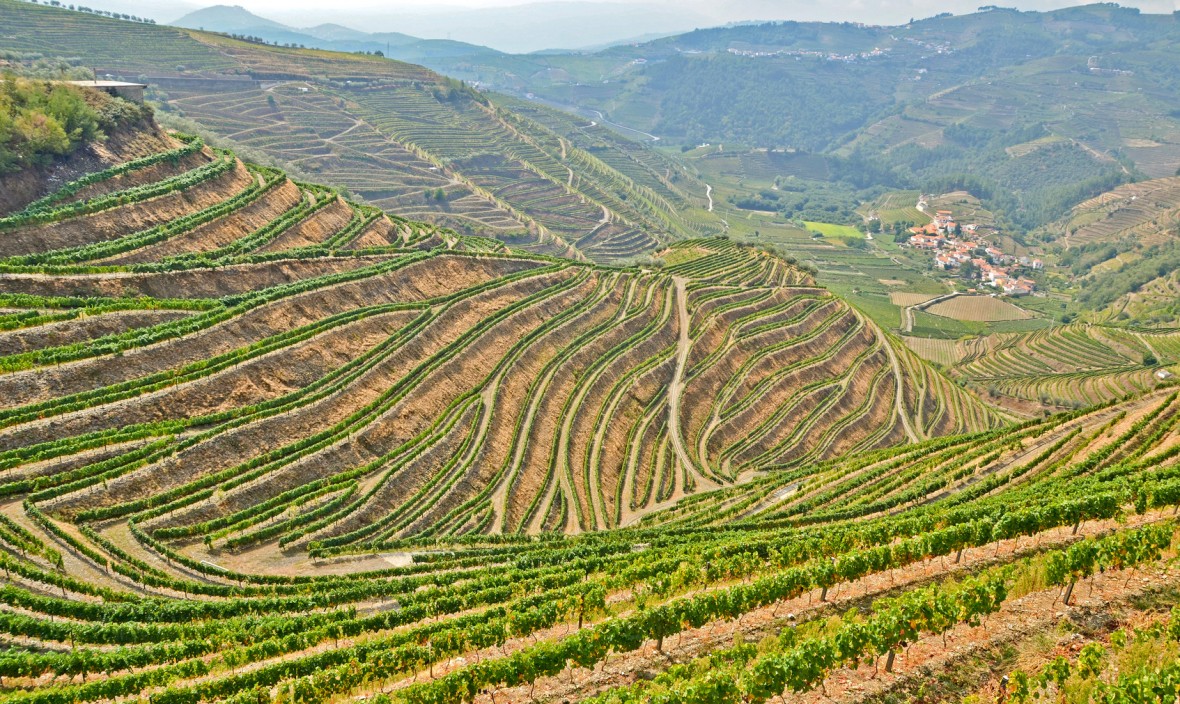
Discover the wines of Douro, a dreamy Portugal holiday destination
Fed up with the usual holiday destinations? Bored of the same old, same old? Have you heard of the remarkable Douro Valley in Portugal? This place will blow your mind.
The Douro Valley is 90 minutes east of Porto in north Portugal, the steep sided home of the Douro river. Voted one of 2016’s best places to visit, it is seriously beautiful, stunningly lovely, tailor made for holidays to remember. But best of all, it’s perfect for people with a taste for world class wines. If that’s you, read on to discover what’s in store in the Douro Valley.
How the Douro wine scene began
Wine-making started here centuries ago and in 1756, it became the world’s first official wine producing region. Better transport links in the 1960s brought tourists and wine aficionados from far and wide, and the rest is history. Now wine lovers of every flavour flock there.
Where to start your wine-flavoured visit to the Douro Valley
Wine and Soul is known for quality rather than quantity, beautifully simple flavours and fairly priced. Visit the Vinho Verde region for delicious Avesso Nature and Branca wines from Quinta de Covela. Test a variety of great wines at A&D Wines in the Vinho Verde area, known for their light and approachable flavours.
Founded way back in 1588, Quinta da Roeda is the oldest working wine firm in the country, famed for its vintage Ports, wood aged reserves, and gorgeous tawnies. For wines as amazing as the views, go to Quinta do Crasto.
Buy wines in the shops from Luis Seabra’s place, where wine for the popular Xisto Illimatado and Niepoort brands is made using native yeasts. They’re packed with flavour with a high acid content that’s rare in these parts. Try Quinta do Tedo, established by Vincent Bouchard of the famous Bouchard et Fils family and dating back 250 years, where wonderfully quirky red blends and rose wines are the name of the game. And discover the cellar at Vertice for masterpieces by the winemaker Pedro Guedes, known and loved for exceptional sparkling wines.
These, of course, are the tip of the iceberg. There are plenty more vineyards and wineries to visit and the region’s wines are the pride of local restaurants and cafes as well as sold far and wide, loved around the globe.
What is the Douro Valley’s best wine?
It’s a matter of taste. They’re so varied, all created so passionately, each with its own unique scent, flavour and colour. Only one thing’s certain... you’re going to love the process of finding out.
If a wine tour in the Douro makes your mouth water, we have some fabulous ideas for you. Go explore!
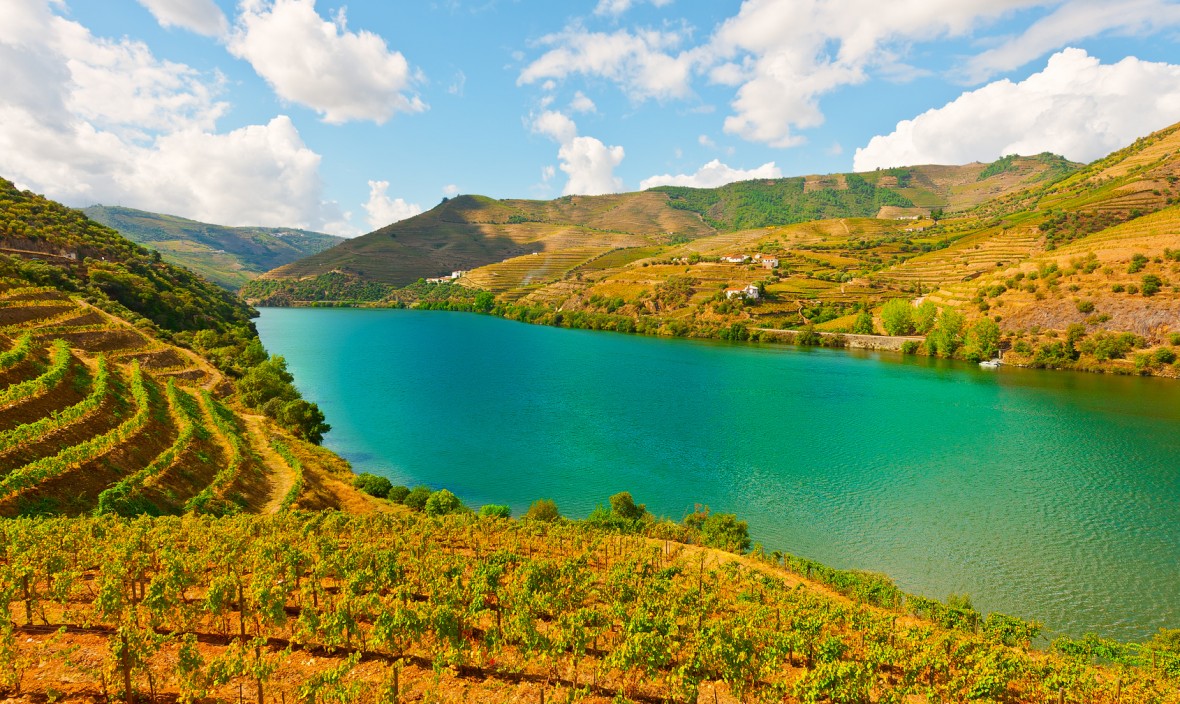
Exploring the Douro Valley by river cruise
The Douro river snakes its way from north-central Spain and across the entire width of Portugal before uniting with the sea at its outlet at Porto. In total it runs for 897 kilometres - though not all of it is navigable by ship.
The parts that are accessible by boat are thankfully so: you won’t want to miss the unforgettable experience that is cruising along the river’s gentle curves as the views of the valley unfold all around you.
So what makes the Douro river such a spectacular route to traverse? More things than we can name, but to break it down, here are five:
The valley.
The Douro Valley that the river nestles into is rich, fertile, and life-giving. Rows of grape vines roll out across the hills creating magnificent terraced waves that change from green to blushing gold depending on the season. The waters from the river give sustenance to all the crops while the valley’s mild climate makes growing and cultivating grapes the lifeblood of the local communities. Witnessing both life among the valley and the beauty of its scenery is perfectly done from the vantage point of the river.
The wines.
And as you can imagine, where there are vineyards, there’s wine. The Douro region is famous for its wines and port wines. Dotted along the river are numerous quintas (wine estates): stunning properties with paradisiacal gardens and stretches of trellised vines who offer hospitality, cellar tours, meals and wine tasting.
The river’s size.
Owing to the Douro river’s relatively narrow locks, hulking cruise ships are absent from its waters. That’s another reason why cruises here are so charming: smaller boats mean more sympathetic connections to be made with other passengers and crew, and a more tranquil landscape stretching out before you.
The historical towns.
Most journeys start from Porto, Portugal’s second-largest city, with its Unesco World Heritage listed historic town centre and picturesque cityscapes, the birthplace of port wine and a cultural hub of contemporary events. The urban landscape may change as you drift along the river, but the romance around you does not. The city gives way to olive trees and grape vines interspersed with small, historic villages ripe with stories for the telling.
The pace.
You don’t have to be a wine lover to enjoy a cruise on the Douro. As well as the beauty of the surroundings, the sunsets melting the sky across sweeping views of the valley, the friendly locals and history-steeped towns, there’s also the general relaxation of the whole affair. Drifting down river, letting the sun’s rays warm your skin and the calls from the birds overhead remind you you’re so close to nature, you can’t help but feel tranquil and serene. And it must be said: an afternoon glass of locally-made vinho tinto can only make things even better.
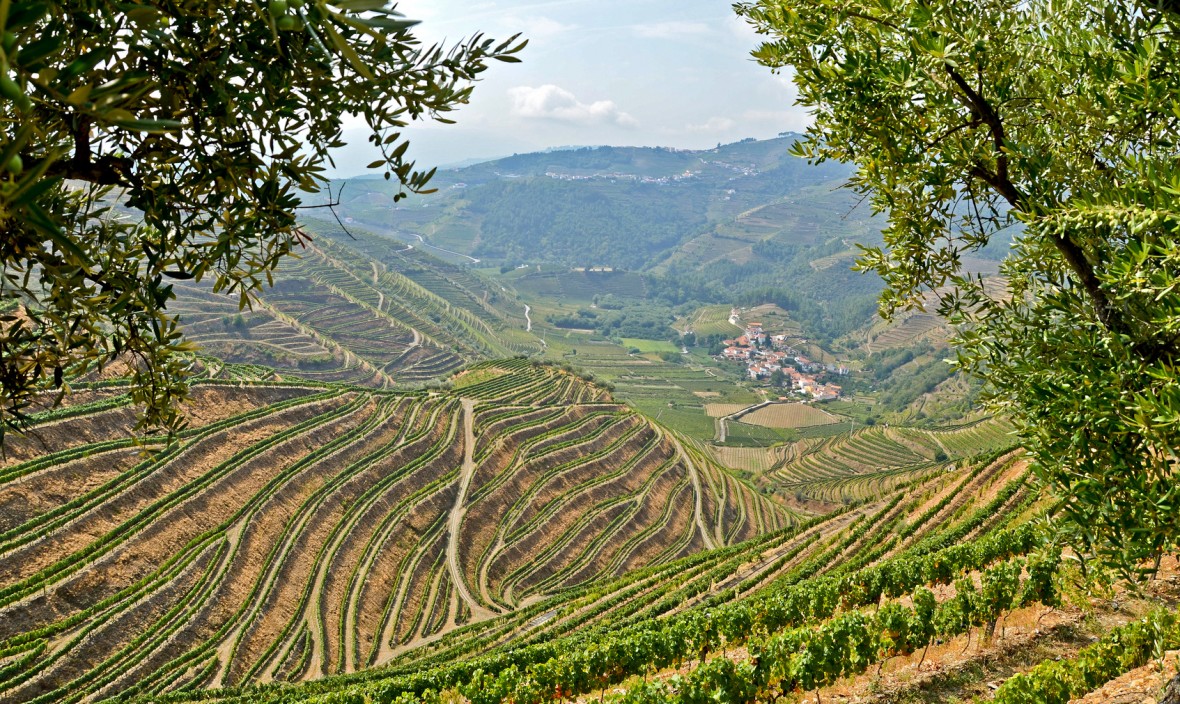
7 interesting facts about the Douro Valley wine region
It’s beautiful, bountiful, and deeply historical. But how much do you really know about the Douro Valley wine region of Portugal? To give you a brief overview of what makes it so significant, here are 7 interesting facts you may not know about the Douro Valley.
It has a 2,000 year history.
Archaeological evidence shows that wine was being made in the Douro Valley in Ancient Roman times. In fact, the first traces of vines date back even further — 3,000 years, to the Bronze Age — though that era provides little record of wine making, only grape growing. None the less, the 2,000 years of wine making we do know about have shaped the history of this unique region and have made it what it is today.
It was the first formally-demarcated wine region in the world.
Port Wine harks back to the 1600s when Douro wine exporters began to add a little grape brandy to their product in order to help it survive the long sea journey to England. Exports boomed, for a while, but by the mid 1700’s the industry had hit upon rocky times. In 1756 Portugal's ruler, the Marquis of Pombal, took state control over the Port Wine trade in a bid to turn things around. He had the region marked out with 335 stone pillars and turned it into the world's first ever wine region to have a formal demarcation.
It's the only place in the world Port Wine can be made.
Because of the formal demarcation, and the unique characteristics of the land, the climate, and the culture that contribute to the production of Port Wine, it cannot be produced anywhere else in the world. True Port Wine can only originate in the Douro Valley!
The vines grow in rock.
You might expect grape vines to grow in rich, earthy soil, but the Douro Valley ground is actually schist - a slate-like rock crushed to soil. The schist has some unique properties which influence the vines. Because of the crumbly nature of the broken rock, the roots of the vines are able to extend deep into the earth in search of moisture and nutrients. Rainwater collects between the fissures and is retained and distributed. The schist also helps regulate temperature — handy in a harsh climate like the Douro Valley — by reflecting heat upwards, ripening the fruits above while also retaining moisture in the under-layers.
The Douro landscape is one of man vs nature.
The entire landscape of the Douro Valley has been shaped by the wine industry. Often it's been a case of man toiling against nature, or working with it; either way, the result is a unique balance between the two. One example: the historic stone-walled terraces that rise impressively across the landscapes. These were formed to allow vines to be grown on the dramatically steep hillsides, since cultivating the land would be otherwise near to impossible.
It's not only for Port.
Even though non-fortified wines have been produced in the region since Roman times, the prevalence of Port overshadowed their reputation for some hundreds of years, and it was only really in the 1950s that high-quality table wines from the Douro started to enter the market. The 1990s was the beginning of a boom time for Douro wines — and these days, the Douro region produces just as much table wine as it does fortified wine.
It’s been recognised by UNESCO.In 2001 UNESCO declared the Douro Valley wine region a World Heritage Site — a testament to its significance if ever there was one. The classification is based on several factors, like the 2,000
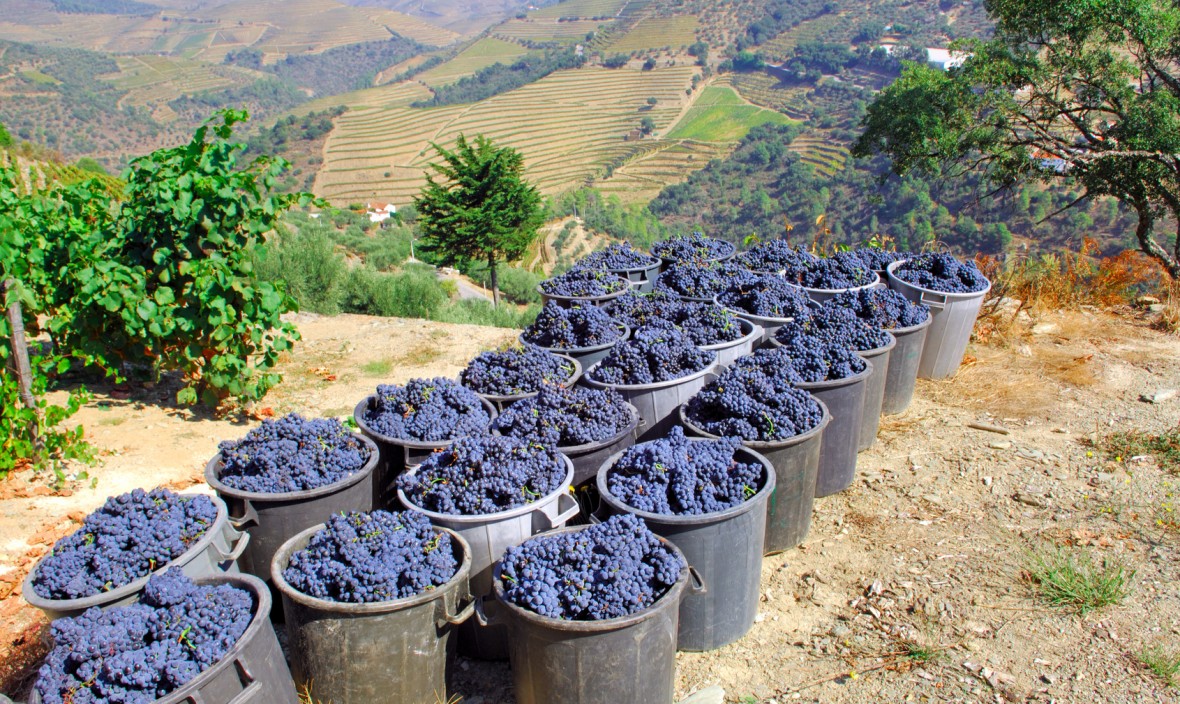
Wine tasting in the Douro Valley
There are two types of wine lovers: those who know their Pinot Noir from their Malbec and can single out a floral or fruity note at a mere sniff; and those who don’t care about any of the fancy stuff so long as whatever they drinking is made of grapes and tastes good.
It doesnt matter which group you fall into. If either of those sound like you then youll most surely enjoy a wine tasting experience in Portugals Douro Valley. And since you just read the words; wine and & tasting; in the one sentence, we hardly need to explain why!
The Douro region is perhaps most famous for its Port wines. Sweet and full-bodied, Port is a fortified wine made unique by a number of factors including the climate and topography of the Douro area, the soil quality, and the traditional production methods — together meaning that the Douro is the only place in the world where Port wine can be made.
There are up to 30 grape varieties that can be used in the making of Port wine, but generally speaking makers stick to five or six of the best and most suitable varieties of grape. Among the Douro red grapes are the Tinto Cão, one of the oldest Douro varieties with small compact bunches and small yields, characterised by a crisp acidity and a velvety texture that makes it ideal for creating long-lasting, complex wines; the Touriga Nacional, a famous yet lesser-grown variety capable of producing the deepest, darkest and most concentrated wines; the lighter and more fragrant Touriga Francesa, also the most widely-planted; the Tinta Roriz, equal to Spain’s Tempranillo; and the Tinta Barroca, a luscious, sweet and soft variety grown more in the shadowy
parts of the vineyard and lending a rustic, earthy character to its wines.
The Douro also yields beautiful white wines grown from grape varieties like the Rabigato, Viosinho and Malvasia. Port wine comes in both red and white varieties (though red is undoubtedly the most well-known) but if youre not that keen on the strong and sweet intensity of a fortified wine, fear not: the Douro's grapes also get crushed and bottled into both red and white table wines. In fact, the Douro region produces just as much table wine as it does Port wine.
There are plenty of Douro Valley tours that will lead you from wine estate to wine estate (in Portugal the estates are called “Quintas”) where you can indulge in some wine-tasting activities, sampling the best wares from each vendor and getting acquainted with the Portuguese grape varieties and their liquid yields. These visits are both informative and educational as well as delicious. So if all the talk about grape varieties and their qualities is news to you, don’t worry — it’s the kind of detail that you can learn about as you go, and that will only serve to heighten your appreciation of the wines you’re tasting.
Along with sending your palette into sensory overdrive from so many beautiful wines, the Douro Valley will also be a feast for your eyes: from rolling hills covered in vines to lovely villages and heritage estates, a wine-tasting tour is a complete experience that's well worth having.
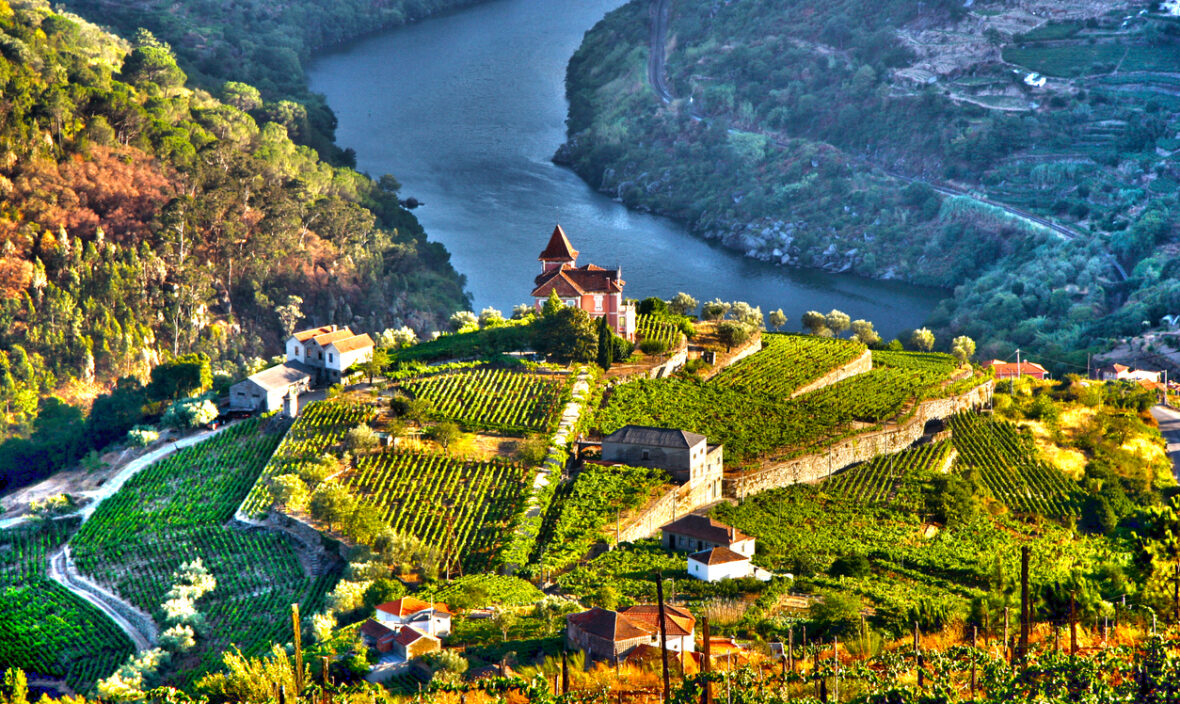
The best towns to visit in the Douro Wine Region
You're planning to take a tour of the Douro Valley and your head is (justifiably) spinning with the excitement of all the incredible wine that's waiting to fill your glass. We're not going to argue: the Douro Valley really is a wine-lover's paradise. But we’ll also remind you that there are other beautiful things to see and do as well as lose yourself in a maze of cellars and vineyards. Because let's face it, you're going to need a break from all that wine once in a while. While on your Douro Valley tour, be sure to admire some of the gorgeous Portuguese villages and towns that dot the river and valley. Here are some of our favourites:
Pinhão
The small yet charming village of Pinhão is located right in the heart of the wine region, along the right bank of the Douro. It's a sleepy and traditional town with green hills and lovely vineyard views all around. The town itself is of 19th century origin and today offers a number of restaurants, cafes and craft shops to entertain tourists. Perhaps the most well-known site in Pinhão however is its train station: built in 1937, it's covered in beautiful blue and white azulejo tiles depicting rural scenes of Portuguese life.
Favaios
A little north of the river sit several sun-soaked villages such as Favaios — a cluster of terracotta roofs nestled in between a patchwork of green vineyards and fields, with the white spire of a village church rising from its center. Favaios' origins go all the way back to the Iron Age, and ruins of ancient walls can still be found there. These days Favaios is most well known for its Moscatel wines, which you can sample, along with the village's unique traditional four-cornered bread, at the Favaios Bread and Wine Museum ("Núcleo Museológico - Pão e Vinho").
Amarante
Amarante straddles the Rio Tâmega, a river which branches northwards up from the Douro. Though a little further from the Douro valley, Amarante is frequented by some tours and is worth a little visit if you have time. The town itself is old, cobbled, and charming, with a wide arched bridge spanning the river in the middle of it. The town's June festivities are raucous and quirky, despite being in honour of São Gonçalo, the town's patron saint. For one long weekend music blasts all night, fireworks erupt in the sky, and stalls appear selling an unusual treat: traditional phallic- shaped pastries that are gifted as a fertility charm.
Provesende
Another small gem of a village, Provesende captivates visitors with its rich history and assortment of architecture. In the middle is the main town square which houses an unusual cafe-slash- makeshift-museum packed with ancient agriculture and ethnographic objects. Nearby is a baroque stone fountain, a 16th century pillory (or stocks) for imprisoning criminals, and a charming baroque church dating back to 1720. The village also contains a surprising array of stately manor houses from the 18th century — remnants of a flourishing economic period. Though not all well-kept today, they're still quite beautiful to look at.
Lamego
South of the Douro River yet still within the Douro wine region is Lamego. Visit the Lamego Museum which abounds with colourful azulejo tiled panels, 16th century paintings by Grão Vasco, a fully reconstructed ornate gold chapel, and much more. The town's rich history also manifests in a 12th century castle and the impressive Gothic cathedral which was built by Afonso Henriques, Portugal's first King.
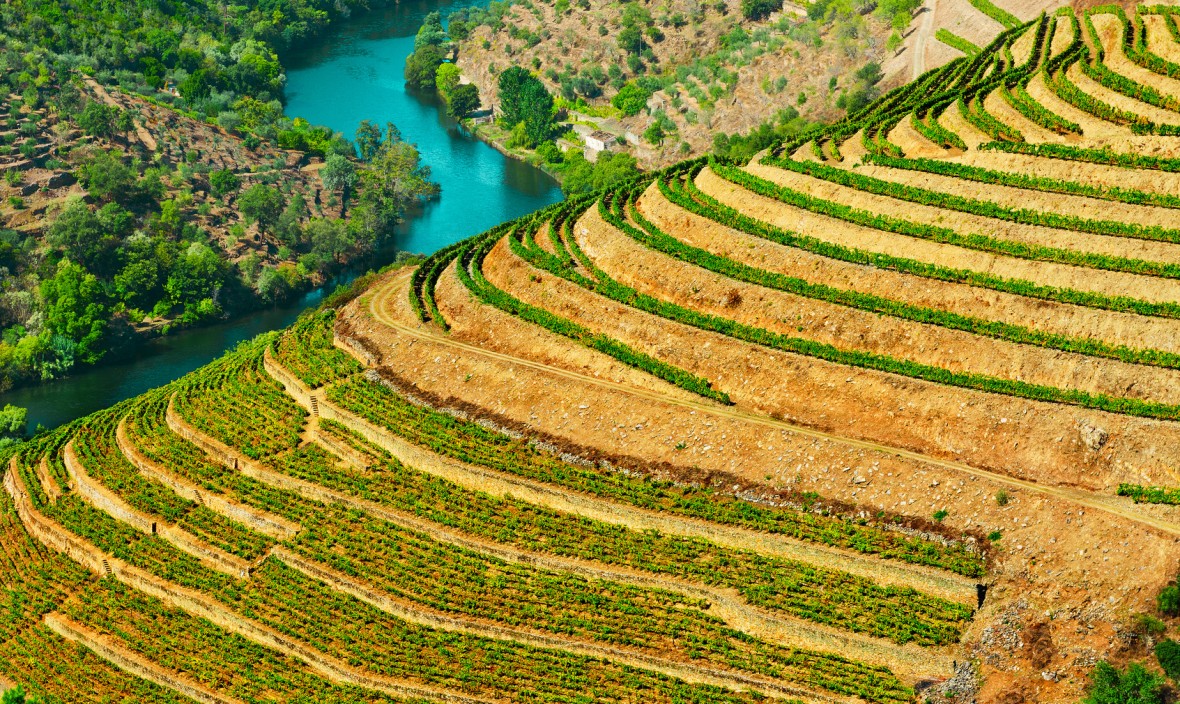
Some of the best vineyards to visit in the Douro Valley

Douro Valley best place to visit
8th. Douro Valley, Portugal For centuries, Portugal’s Douro Valley, the world’s first officially designated wine region, has drawn people for not only its port but also for the postcard-pretty landscapes—steep terraced vineyards carved into mountains along the Douro River and whitewashed quintas (wine estates) atop granite bluffs. If you have time for only one winery, go to Quinta da Roêda, an estate in Pinhão owned by port producer Croft, with a visitors’ center in a converted stable. Take a guided walking tour or, during harvest time, tread grapes in granite fermentation tanks alongside workers. For full immersion, check in to a wine hotel. The six-suite, all-wood Casa do Rioopened last summer in the Upper Douro. And the 57-room Six Senses, near Lamego, has a wine library and uses grapes in its spa treatments. While the traditional way of touring the Douro has been on day trips from Porto, there are now several ways to fully experience the valley. Douro Azul offers yacht trips with vineyard stops, Helitours goes via air, and Viking River Cruises’ third Douro River ship, Osfrid, launches in March. — Anja MutićThe full link to the Douro Valley recognition is here.
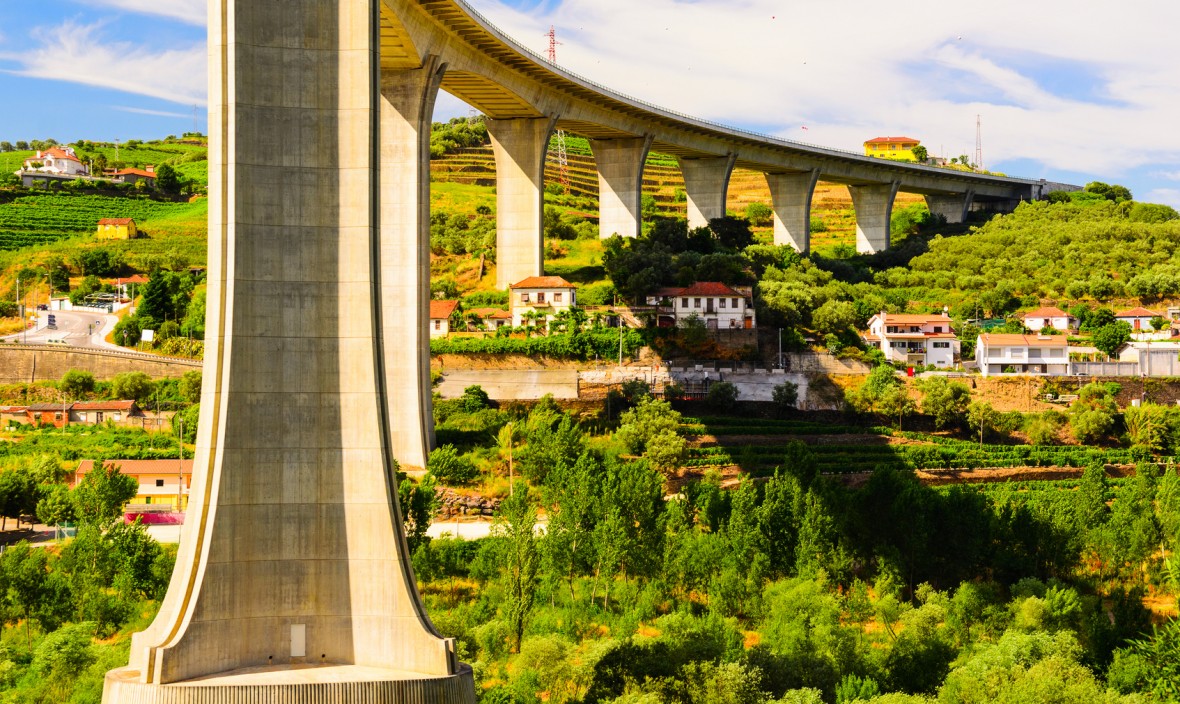
Discovering the beauty of the Douro Valley
